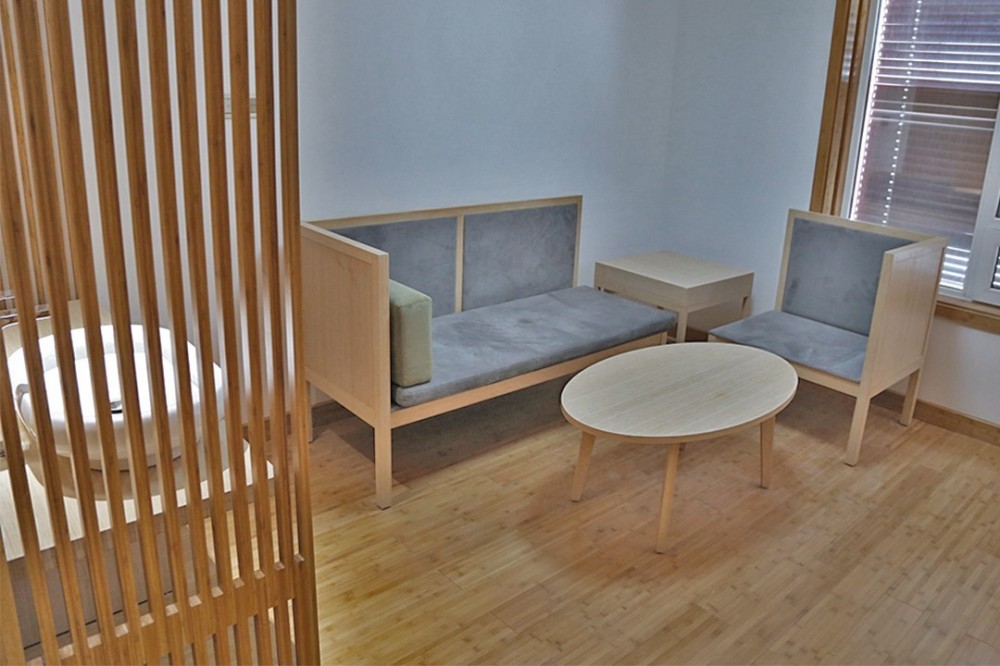As a technologist working inside a bamboo flooring factory, I spend most of my time between raw bamboo bundles, hot presses, testing equipment, and QC reports. On paper, many suppliers look almost the same: similar product names, similar certifications, similar photos. In reality, there are big differences in stability, formaldehyde emissions, color consistency, and service.
If you’re sourcing bamboo flooring from China through Alibaba or other channels, your main risk is not “being scammed” in the obvious sense. The bigger risk is paying for material that looks fine on arrival, but starts warping, cracking, or emitting odors once it’s installed. That’s usually not bad luck; it’s a result of shortcuts in manufacturing, mismatched specifications, or inadequate quality control.
Below is a practical way to vet a China bamboo flooring supplier, based on what actually happens inside factories: how we buy raw material, how we run production, and how serious factories treat long‑term export business.
1. Start With the Right Shortlist
Most buyers begin with Alibaba, Global Sources, or Made‑in‑China. That’s fine, but the way you filter your list matters.
Look for:
-
Export focus on bamboo flooring
Check if bamboo flooring is a core product, not just one line in a wide mix of unrelated items (toys, tiles, furniture, tools). A factory that mainly produces bamboo flooring usually has stronger process control for pressing, machining, and coating. -
Clear company identity
Prefer suppliers that show:
- Full registered company name
- Physical address that you can verify on a map
- Factory photos (not just showroom photos)
-
Years in business and export markets
Suppliers exporting regularly to markets with strict standards (EU, USA, Australia, Japan) are more likely to have consistent emission and quality controls.
From the start, try to narrow down to 5–10 candidates that satisfy these basic criteria before requesting quotes.
2. Understand the Key Types of Bamboo Flooring They Offer
Before you can judge a supplier, you need to understand what they’re actually selling. Most China bamboo flooring factories offer some or all of:
- Horizontal bamboo – You see wider bamboo grain; strips laid flat.
- Vertical bamboo – Finer straight grain; strips stood on edge.
- Strand woven bamboo – Strands pressed under high pressure and resin; higher density and hardness.
- Engineered bamboo flooring – Bamboo as a wear layer on a plywood or other wood core.
- Click‑lock vs T&G – Floating installation (click) vs glue‑down/nail‑down (tongue and groove).
Ask each supplier:
- Which type is their main production?
- What thicknesses and widths are standard?
- What base moisture content do they control at shipping?
A supplier that can answer these quickly and precisely usually has real production behind them. Vague answers like “can do any size you want” without reference standards often mean they’re more of a trading company or they have limited real experience.
3. Check Their Raw Material and Processing Approach
What happens between a raw bamboo culm and the finished plank has a huge impact on quality and stability. As an insider, these are the questions I would ask another factory:
a. Bamboo age and source
Ask:
- Average age of bamboo when harvested (for flooring, typically 4–6 years is preferred).
- Main sourcing regions (Anji, Sichuan, Fujian, Jiangxi, etc.).
Too young bamboo tends to be softer and less dimensionally stable. A factory that tracks raw material age and supplier origin usually has a more mature supply chain.
b. Carbonization and color consistency
For darker bamboo (carbonized):
- Ask how they control color between batches.
- Ask if they use steam carbonization or rely heavily on pigments.
Large color variation between batches is a common complaint and can ruin a project if additional orders don’t match the original flooring.
c. Moisture control and conditioning
This is where problems like cupping and warping start.
Ask:
- Whether they use kiln drying, and what target moisture range they aim for (usually around 8–10% for export).
- How long they condition the boards before machining and coating.
A serious factory will mention moisture meters, test frequency, and specific target values. If all you hear is “we dry very well” without data, treat that as a red flag.
4. Certifications: More Than Just Logos on a Page
Certifications are one of the first things suppliers showcase, especially on Alibaba. Not all certificates have the same meaning, and not all of them are current.
Common certificates/reports you may see for bamboo flooring:
- CARB / TSCA for formaldehyde emission (mostly US market)
- EN 717‑1 / EN 16516 for formaldehyde emission (EU market)
- FSC for responsible forest/bamboo material sourcing
- ISO 9001 / ISO 14001 for quality and environmental management systems
- CE or similar for EU compliance
Verification steps:
- Request scanned copies of certificates, not just photos on a website.
- Check validity dates and the name of the certifying body.
- For FSC and some others, you can cross‑check certificate numbers on the official website.
- Ask if they can provide test reports specific to the product you want (for example: formaldehyde test for the exact structure and coating you will order).
A supplier who quickly provides clear, recent documentation is almost always more organized and serious about compliance.
5. Evaluate Real Production Capacity and Lead Times
Capacity isn’t just about how many machines the factory has; it’s about how consistently they can run and how they handle peak seasons.
Ask detailed questions like:
- Monthly capacity for:
- Strand woven bamboo (m² / month)
- Engineered bamboo (m² / month)
- Standard lead time for:
- 1×20’ container
- 1×40’ container
- How many press lines they operate, and whether they run single or double‑day shifts.
Compare the claimed capacity with:
- Their factory size
- Number of workers
- Years in business
- Number of regular export markets
If a small facility claims extremely high capacity and very short lead times for complex items, take that with caution. In reality, strand woven boards in particular need proper pressing and conditioning time; rushing this shows up later at the jobsite.
6. Samples: What and How to Test
Always start with samples. But it’s not just about checking the color in your office.
Request:
- Product samples that match your planned spec:
- Thickness, width, type, color, surface finish, click/T&G.
- At least:
- One full‑length board
- Shorter pieces if necessary for shipping.
When you receive samples, test:
-
Visual quality
- Surface flatness, uniform grain, color consistency along and across the board.
- Coating smoothness, no pinholes or dust inclusions.
-
Machining accuracy
- Lock system (if click) – see if it locks smoothly without big gaps.
- Tongue & groove fit – check if joints are tight and straight.
-
Basic stability (simple non‑lab test)
- Store sample boards in your office or a slightly drier room, and look for changes (cupping/warping) over a few weeks.
- This doesn’t replace proper lab tests, but can reveal gross problems.
-
Odor
- Strong chemical smell that doesn’t fade after a few days typically indicates high emissions or solvent‑heavy coatings.
If possible, send a piece to a local lab to check formaldehyde emission; the small cost can save a lot of trouble later.
7. Communication Style and Technical Understanding
Email and chat exchanges tell you more than you might think.
Signs of a stronger supplier:
- They understand technical terms: density, MOISTURE %, E0/E1, Janka hardness (or similar), UV lacquer layers, aluminum oxide content.
- They can suggest adjustments based on your market:
- For example, recommending slightly higher MC for very humid destinations, or specific click profiles suitable for floating installations.
- They are open about limitations:
- For example, explaining that certain very wide planks in solid strand woven bamboo carry higher risk of deformation, and proposing engineered solutions instead.
If everything is “no problem” and “can do any color, any spec, any requirement” without discussing technical trade‑offs, be careful. Every production choice has consequences.
8. Pricing, Payment Terms, and Hidden Costs
Price is always part of the decision, but extremely low prices should raise questions.
Ask for:
- Detailed quotations, including:
- Exact product spec
- Coating type (UV, oil, PU, water‑based)
- Finish (matte, semi‑gloss, high‑gloss)
- Packaging details (carton type, palletization)
- Price terms (FOB, CIF, DDP, etc.) and loading port.
- Payment terms:
- Typical is 30% deposit, 70% against copy of B/L or before shipment.
- Some established relationships use LC at sight.
Consider:
- Whether the price aligns with raw material and process reality.
- If the quote includes cartons, pallets, and labels, or if those are extra.
- Possible extra costs:
- Custom cartons with your logo
- Extra QC inspections
- Special packaging for retail.
A reliable supplier is not always the cheapest. A very low price often reflects shorter drying, cheaper glue, less coating, or weak QC.
9. Quality Control: What Happens Before Loading
Ask for a description (and preferably photos) of their QC steps:
- Incoming raw material checks (bamboo strips, adhesives, coatings).
- In‑process checks:
- Press temperature and pressure records
- Moisture measurements at different stages
- Final inspection:
- Dimensional checks (length, width, thickness tolerance)
- Surface grading and defect rejection rate
- Coating adhesion and scratch resistance tests
If they can share a sample QC report with you (with sensitive client info removed), you’ll see how seriously they track data.
For larger or long‑term orders, consider:
- Hiring a third‑party inspection company to perform pre‑shipment inspections.
- Doing a container loading check to confirm correct items and packaging.
Good factories usually cooperate with inspections; resistance or heavy pushback is not a great sign.
10. Stock, Inventory, and Flexibility
Some buyers want custom colors and sizes, others want quick delivery from existing stock.
Ask suppliers:
- Whether they maintain regular inventory for certain specifications.
- If they hold semi‑finished stock (uncoated boards ready for final sanding and finishing).
- How fast they can repeat a previous order of the same item.
Factories that operate with a mix of made‑to‑order and certain standard stock items can support both larger and smaller buyers better. If everything is made fresh with long lead times, consider how that matches your own inventory planning.
11. Shipping, Packaging, and Damage Prevention
Bamboo flooring can be damaged during transport if packaging and palletization are not done properly.
Check:
- Carton quality – thickness, water resistance, whether they’re suitable for multiple handling.
- Board protection – corner protection, plastic wrap, desiccant if needed.
- Pallet style – fumigated wooden pallets or other types, and whether they match your market’s import rules.
Ask how many m² per 20’ / 40’ container they usually load for your specific product. This helps you calculate:
- Landed cost per m² more accurately.
- Whether their loading plan makes sense; serious exporters know these numbers well.
Clarify who handles shipping arrangements:
- If FOB, you arrange shipping.
- If CIF or DDP, they do; make sure to compare freight quotes and transit time.
12. Verifying the Factory: Audits, Video Calls, and Visits
A site visit is the most direct way to confirm a factory’s capabilities, but not everyone can travel.
Options to verify:
-
Video calls or live factory tours:
- Ask to see raw material yard, kiln drying, pressing, machining, coating line, packing area.
- Observe whether equipment is actually running and workers are present.
-
Factory audits:
- Engage an independent audit company to check basic production capacity, processes, and documentation.
Simple checks during a live or recorded tour:
- Does the layout look coherent for bamboo flooring production?
- Are there stacks of raw strips, pressed blocks, boards in drying racks, and finished cartons?
- Does the factory look active and continuously operating, not staged?
Even if you rely on a trading company, knowing which factory actually produces your flooring helps you control risk.
13. Building a Long‑Term Relationship
The most reliable suppliers tend to treat you not as a one‑time order, but as a recurring partner. That relationship, however, is built on both sides.
Helpful steps:
- Start with small or medium trial orders after testing samples, not immediately with multiple containers.
- Share clear documentation of your requirements:
- MC target, grading rules, defect limits, preferred pallets, label texts.
- Give structured feedback after each shipment, especially early ones:
- Color consistency, machining quality, claims from your customers.
A good factory uses your feedback to adjust tooling, sorting grades, and color formulations. Over time, this makes your product more stable, reduces complaints, and keeps your total cost lower—even if the unit price isn’t the very lowest on Alibaba.
Selecting a trustworthy China bamboo flooring supplier is a matter of aligning what you see on a screen with what actually happens on the production floor. When you ask the right questions about raw material, processing, QC, certifications, capacity, and shipping, the differences between suppliers become much clearer.
Photo‑ready samples and attractive prices are only the start. The real test comes months and years later, when those floors are installed and still performing well. The suppliers who plan for that long horizon are the ones worth building your business around.













